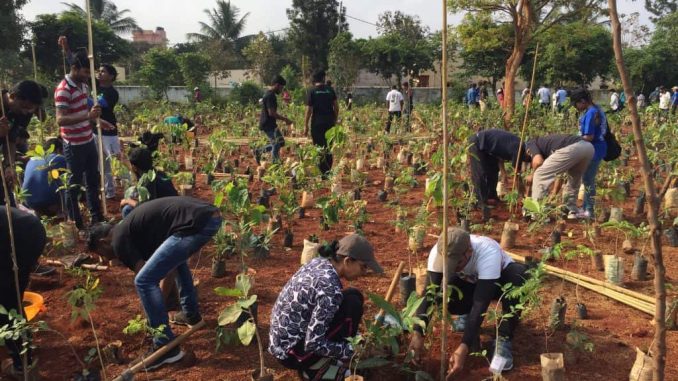Miyawaki Method: Urban Forest To Come Up In Bhubaneswar

Bhubaneswar: Here’s some good news for nature lovers. The Bhubaneswar Development Authority (BDA) has taken up a project of creating mini forests on empty plots or wastelands in and around the city using the Miyawaki method, a Japanese technique of afforestation, to increase the green cover in the Odisha capital.
Known as the Miyawaki forest, a first-of-its-kind in Bhubaneswar, ensures that plant growth is 10 times faster and the resulting plantation is 30 times denser than usual.
A Bengaluru-based NGO, SayTrees, will plant over 25, 000 saplings of indigenous species at one time with the help of volunteers on patch of land, nearly 2.5 acres. For this, the BDA is in the process of finalising a suitable place in the city, sources in the urban body said.
If all goes as per the plan, then work on creating a first mini urban forest will begin in December, an official said.
The city development body is also planning to use the unused space inside some big parks in city for creating such mini urban forests.
BDA officials recently visited four places last week, including three parks – Buddha Jayanti Park, Madhusudan Park and Guru Kelucharan Park – to finalise suitable places for planting saplings.
The NGO, in association with the BDA, will keep a watch over the saplings for around two/three years. A gardener will be assigned to take care of the area and water the plants.
“Saplings would be strategically planted using the Miyawaki method, which involves growing a great number of saplings within a small area. This, in turn, produces a dense forest,” said an official of the NGO, who visited the prospective places in the city for the project.
Explaining the benefits of the afforestation method, which was quite successful and popular in cities like Bengaluru, Hyderabad and Chennai, the official said: “In a normal planting technique, you could have about 400 plants per acre. But in the Miyawaki method, we can grow more than 10,000 plants.”
This apart, pathways will be created inside these urban forests, especially those that will be developed in parks, to help people taking a walk and enjoy the nature. “This will provide a respite from the daily hustle-bustle of the city life and alarming levels of pollution,” said the official.
The green cover in the city suffered a massive blow as over one million trees were uprooted in the severe cyclonic storm FANI that hit the coastal Odisha on May 3 this year.
As per a report by the Odisha State Pollution Control Board (OSPCB), the level of pollution in the city has increased due to increasing population, construction activity, transport and felling of trees.
Besides, Bhubaneswar have also failed to maintain the national ambient air quality standards fixed by the Central Pollution Control Board.

Comments are closed.